|
This corn disease has become evident in areas of northern Midwest corn states of USA in 2018. Although the disease has been known to occur in specific areas of Central and South America for many years, its first known appearance in the USA was in 2015. I saw it in our plots in Northern Illinois in 2016 but it was only on a few plants. Spread and intensity on most of our nursery in 2018 was surprising. It appears to be in most fields in the region late in the season. This disease occurrence raises many questions about its significance to effect on yield and stalk breakage vulnerability. Answers will depend upon understanding the interaction between the fungus (or fungi) biology and that of the corn.
The fungus (Phyllachora maydis) is believed to be an obligate parasite of only the corn species. This implies that it can only grow and reproduce in living corn tissue. It has not been shown to be transmitted in corn seed. Phyllachora maydisis only known by its sexual reproduction stage. It belongs to a group of fungi called Ascomycetes identified by production of haploid spores in elongate mycelial tubes called asci after the fusion of spores. Many corn leaf diseases are caused by Ascomycetes but most of these pathogens reproduce asexually as conidia. Most also cause initial infection with these conidia being produced on infected dead leaves. Have we misunderstood this potential in this fungus? It is currently unclear how this pathogen is interacting with corn. Our PSR corn disease nursery includes many inbred and hybrid entries from US seed companies. We inoculate these with 5 pathogens to evaluate resistance as a service to the companies. Most are not identified to us by hybrid or seed parents, but it is assumed they represent a range of genetics and maturities. I observe plots frequently during the summer but missed the early development of tar spot. I did not record seeing the disease until at least 2 weeks after most plants had flowered. Increase of symptoms was dramatic. It also appeared to be related to rapid increase in gray leaf spot and leaf senescence. These confusing apparent interactions of senescing leaf tissue increase in gray leaf spot and tar spot has continued. Many corn researchers are now working to resolve questions brought about by this 2018 observations. Where did the inoculum originate? From infected debris of past year, seed or spores blown in from Mexico? What was the environmental influence that resulted in the disease outbreak? How to identify resistance if artificial culture of the pathogen is impossible? How to distinguish resistance from maturity differences? Does Phyllachora maydiscause do significant damage to the plant or is it only significant when combined with other leaf pathogens? Does the pathogen produce a phytotoxin resulting in death of leaf cells? I suspect these questions will not be easily or quickly resolved. Biology of this pathogen, interaction with corn plant and environmental influences are all involved in the complex. U.S.A. Midwest farmers are seeing more stalk rot this year than most years. Weather during the growing season is the most likely the cause. Early season moisture established good growing for much of the corn growing areas. Rain was more than average for many areas, although others were excessively dry. Most of the summer was warmer than normal as well. Plants responded to the heat by moving to flowering quicker than in some summers. Extra water resulted in more shallow roots but also good extension of the silks and high kernel numbers. Weather after flowering also varied with warmer than normal temperatures, high humidity and scattered rain showers in much of the upper Midwest.
Humid warm nights favored the fungi causing gray leaf spot and tar spot. Areas with frequent rain during the month after flowering developed significant northern leaf blight on corn. Each of these diseases destroyed significant photosynthetic tissue in susceptible corn hybrids. Weather during that period also tended to be cloudy, reducing the rate of photosynthesis. Warm nights increased the cellular respiration rate more than the cool Midwestern nights that are more common in these areas. 2018 summer weather in much of the US corn belt resulted in high kernel numbers, photosynthetic stress after flowering due to leaf disease and cloudy weather. Competition for use of reduced levels of sugar between translocation to the kernels, and cytoplasmic respiration in all plant tissues frequently resulted in degradation of roots and eventual root rot. This was followed by plants wilting. Many fungal species invaded the dying stalk tissue created the obvious symptoms of Fusarium, Gibberella, Diplodia or Anthracnose stalk rots. Hybrids that showed a high incidence of stalk rot in 2018 probably would have been OK if this specific weather pattern had not occurred. Correctly predicting the 2019 weather will be helpful in deciding on the best hybrid, tillage, plant density and other inputs for that season. This is not an easy task. Assigning a name to the dominant fungus in a rotting corn stalk implies that an aggressive pathogen attacked the plant and therefore caused the plant to be vulnerable to lodging. Symptoms of black streaks on outer rind indicates that the problem was anthracnose, caused by Colletotrichum graminicola. Small dark pycnidia emerging from rind tissue near the node indicates that Diplodia maydis was dominant. Perithecia of Gibberella zeaeon surface of rind and pink color inside the rind of the lower stalk suggests that this was the main cause of the rot. Fusarium verticilloidesis always present in rotting stalks and therefore can be assigned as the cause if none of the above symptoms are present.
It may be comforting to assign a name for the stalk rot, but it can lead to avoiding the more difficult analysis of the actual cause of the plant dying before normal completion of grain fill. The predisposition of the stalk to invasion by any of these fungi involves the complex biology of that corn plant as it moves available sugar to the grain. If the plant did not supply enough carbohydrate to meet that demand, root tissues became deficient of the metabolic energy needed to fend off the multiple soil organisms capable of invading and digesting weakened root tissue. Similar deficiency in lower stalk tissue likewise decreases resistance to the many fungi, including those named above. If roots are sufficiently damaged that water uptake cannot keep up with water loss from transpiration from the leaves, the plant wilts. This further weakens the stalk as the pith tissue withdraws from the rind, changing it from the strength of a rod to that of a tube. Although the fungal related cause of the stalk rot may be easy to analyze, the more important analysis should involve the basic reasons that the plant did not reach the season with sufficient sugar to maintain root and stalk living tissue until completion of grain fill. Did a leaf disease result in reduced photosynthesis? Did early season environment factors, such as water supply cause better silk emergence than normal for that hybrid but late season stress such as lack of water or cloudy weather reduced photosynthesis? Was the plant density too great for that hybrid for that season? Nitrogen-potassium ratio was wrong for that season? Best hybrid for the previous season may not have been the best for this season and, likewise, the one that had stalk problems in a season with more stalk problems may be the best the next season. It is good to analyze for potential causes of stalk rot in the field when it occurs, harvest before severe lodging and then put together the potential causes of insufficient photosynthesis to meet the translocation demand to the ear without causing excessive root tissue death. Having a name for the obvious stalk rotting fungus may seem comforting but getting at the main biological cause can lead to reduced problems in the future. I first was introduced to corn diseases in 1971, when asked to identify diseases on corn leaves gathered across the US, Race T of southern corn leaf blight was still a potential problem. Although my master’s degree in plant pathology from Kansas State University was helpful, my PhD at University of Tennessee emphasized botany and mycology (study of fungi). That disease resulted in seed corn companies deciding that they needed to add a plant pathologist to their research program. So, when asked, I told them that I was one. The withdrawal of T sterile cytoplasm from corn solved a significant disease problem at that time. Corn breeders for the company then asked if I could help solve the problem with corn stalk rot. A search of research literature showed that stalk rot had been studied by many in the 1960’s. Perhaps, the fact that this coincided with increased use of single crosses is significant because it made it clear that individual plants with near identical genetics did not show the same degree of stalk deterioration. Researchers studied cell death in stalk pith cells, reduced sugar levels in stalks were associated with stalk rot. Others showed that root rot generally preceded stalk rot. Although some fungi such as species of the genera Diplodia, Gibberella and Fusarium were obvious in rotted stalks, multiple other species of fungi were also present. I presented that literature in a summary to a group of corn pathology researchers in 1975 (a copy listed below).
Corn plants are most vulnerable to premature wilting during the period of 40 to 60 days after flowering. This sudden change in the plant appearance is due to depravation of sugar to roots because of competition with grain in plants with insufficient photosynthate to meet metabolic needs of the roots and the translocation pull to the grain. Each factor is a complex genetically involving physiology of photosynthesis, morphology and disease resistance of leaves, root structure, rate of translocation of sugars to each kernel and number of kernels. Environmental influences such as plant spacing, moisture influencing kernel numbers, daily light intensity and pest and disease pressure.
Wilting, commonly known as premature death, occurs scattered within a corn field as majority of plants maintain normal green and turgid leaves as they continue to move sugars to the kernels while maintaining enough root tissue functions for water absorption and movement to the leaves. The wilted plants show the outside appearance of gray leaves and ears turning downwards. Wilting causes major internal changes in the corn plant. Physical strength of the stalk is reduced by 1/3rd as the pith tissue is withdrawn from the outer rind tissue, essentially changing the strength of a solid rod to that of a tube. This is even before fungi begin to digest the cell walls of the stalk. Most cell metabolism is halted within a few days because of dependency on water. This includes translocation of sugars to the kernels, resulting in light kernel weight, compared to kernels on plants that continue to function for the usual 60 days after pollination. Kernels of affected plants form an abscission layer (black layer) within a few days after plant wilting although kernels on most non-wilted plants delay the abscission layer formation until normal grain fill is finished. Individual plants with wilting symptoms have lighter kernels than most plants in the field because of this shortened grain filling period. If these plants did not have unusual environmental stress such as leaf disease or insects causing upper stalk breakage, they probably had more kernels than the adjacent, green plants. A study published in 1980 (Phytopathology 70:534-535) showed that wilted plants with no obvious leaf damage had 10% more kernels than adjacent non-wilted plants. The individual plants may have nearly identical total grain weight, depending upon the timing of plant wilt in relation to normal grain-filling period. A few wilted plants within a field can indicate that near maximum yield was obtained for that hybrid in that season’s environment. However, the ensuing effect on lodging detracts from that optimistic view and is the subject of the next Corn Journal issue. Sugars produced in pre-flowering corn plants supply the basic energy and carbohydrates for root growth and metabolism just as photosynthesis provides similar tasks for leaf and stalk growth. Hormones such as cytokinins produced in growing points are linked to the movement of sugars to the above and below ground parts of the corn plant. Roots are hard to study but research has shown corn root size begins to detract about 10 days after flowering due to root rot. This rotting can be gradual and may have no above-ground visual effect.
Movement of sugars to newly formed kernels is slow for the first 10 days after pollination, with 80% of the deposit occurring during the next 40 days, at the rate of about 2% of the total per day. That movement is linked to the hormone production associated with each new embryo in the ear. This pull to the ear is constant during that period regardless of reductions in photosynthetic rates due to cloudy weather or leaf disease. Sugars come from other sources such as those stored in the corn stalk pith cells. It also becomes a major competitor with the root cells in need of the sugars for the metabolism to prevent invasion by the multiple microorganisms in the soil with enzymes to destroy root tissue. If the reduction in photosynthesis during this grain fill period is drastic and is combined with a large pull of sugars to the developing kernels, root destruction by pathogens can cause sufficient interference with uptake and transportation of water to the leaves. Failure to replace water lost by transpiration, causes the plant to wilt. A plant with bright green, turgid leaves suddenly turns gray in color and limp in structure. An extreme example of the stress of too strong of movement sugars to the ear is observable in the outer row of a corn field where those few plants with 2 fully-pollinated ears show early wilt symptoms. In the canopy of the field, those wilted plants will either have more kernels than adjacent plants and/or show some signs of reduced photosynthesis such as borers causing upper leaves to be removed, leaf damage from foliar disease or uneven spacing allowing shading from adjacent plants. There are genetic factors influencing root structure, number of kernels, amount of sugars translocated to each kernel, photosynthesis rate per plant and reactions to environmental stresses. Early wilting of plants not only allows the progression of fungi associated with stalk rot but also directly weakens the strength of the stalk. Variables affecting corn leaf disease damage nearly always involves moisture and temperature within a corn growing region during a critical corn growth period. Moisture of debris from a previous corn crop is usually critical to spore production by potential pathogens causing many leaf blights. Very slight air movement within a field is sufficient to move spores of many pathogens the short distance from the soil surface to young plant whorls where moisture is usually available, allowing germination and penetration into the leaves. Further distribution from the initial infection can be associated with gentle winds associated with rain storms. Violent storms with hail cause physical damage to leaf tissue, allowing entrance of some pathogens such as the cause of Goss’ Bacterial wilt. Long distance distribution of pathogens is often associated with direction of storms as spores of some pathogens are easily carried in these winds. Pathogens dependent on reproduction on living corn plants are moved from those areas to more temperate zones by storms.
Air temperatures during the corn growing season affects corn leaf diseases as well. Warm and dry environment general inhibits fungal spore production. Cool evening temperatures are usually associated with dew forming on corn leaves, providing the moisture for germination of fungal spores and penetration of the pathogen into the corn leaf epidermis. Warm and humid summer evenings is ideal for some pathogens like Cercospora zeae-maydis, cause of gray leaf blight. Frequent rain favors the spread and infection of pathogens such as Exserohilum turcicum, cause of northern leaf blight. Vectors of virus diseases are also affected by weather as aphid intensity is associated with drier weather. Corn flea beetles, vector of the bacteria causing Stewarts Bacterial Wilt, movement from environments where the bacteria are maintained on other grasses to new corn planted as the soils warm. Distribution of the insects are often affected by direction of wind. Annual fluctuations in weather not only affect a corn variety’s physiology and resulting grain production, but also the significance of resistance to a specific disease. A variety may be regarded as adequately resistant to a specific pathogen when under usual low intensity of that pathogen but inadequate when the weather factors change. If we are entering into a period of more erratic weather patterns, we should expect some surprising vulnerability of some varieties to diseases. Corn, as a species, appears to have adequate resistance within its genetics to any pathogen, but it requires time and effort by many people to identify the cause of a new disease occurrence, to identify the source of resistance and incorporate the resistance into productive corn varieties. Distribution of the two main corn rust diseases, common rust, caused by Puccinia sorghi and southern rust, caused by Puccinia polysora, is closely related to origin of storms. Both of these fungi are obligate parasites, producing spores only on living plants. They have complex life cycles involving other spore types but the asexually produced urediniospores are the primary means of the spreading of the disease.
Puccinia sorghi, despite the Latin name, only infects corn (not sorghum), and thus temperate zone corn must receive urediniospores from where corn is grown in subtropical areas. In the USA that is usually in Mexico. Urediniospores are small single cells with a thick wall that delays desiccation when carried by high altitude winds. Storms during month of April-June often originate in the Southwestern regions of the country, moving across Central corn belt states. Urediniospores require about 6 hours of moisture to germinate and penetrate the corn leaf. This is the environment of the corn leaf whorl during these months, allowing early establishment of the disease in a field. More spores are formed from this initial infection within 7 days, allowing more local spread. Timing of infection is significant because of continual moisture present in the whorl. If storms carrying the spores arrived during the early corn growth period, further spread within the field is likely. Late planted corn frequently has more vulnerability to the disease, but timing and origin of storms also is significant. Urediniospores are orange in color, but spores produced as the corn plant matures are rust pustules producing black teliospores. These will not infect corn but only the alternate host, a tropical Oxalisspecies. That process includes sexual reproduction allowing for meiosis and generation of new genetic combinations of rust. That becomes the source of common rust races that overcome the single gene resistance used in corn. The new races originate in the tropical areas where the rust fungus completes its life cycle, including recombination of its genetics. The new races spread with storms, increasing as they overcome common single gene resistance. Puccinia polysora has a higher temperature requirement for infection than Puccinia sorghi, but the spread to temperate zone is also affected by storms. Although the alternate host for completion of its life cycle is unknown, genetic variability in the fungus suggests that it does exist. Whereas many corn disease pathogens are simply dependent on moisture and humidity for disease development, the rusts are also depending on direction of early season storms to spread from tropical to temperate areas. |
About Corn JournalThe purpose of this blog is to share perspectives of the biology of corn, its seed and diseases in a mix of technical and not so technical terms with all who are interested in this major crop. With more technical references to any of the topics easily available on the web with a search of key words, the blog will rarely cite references but will attempt to be accurate. Comments are welcome but will be screened before publishing. Comments and questions directed to the author by emails are encouraged.
Archives
December 2021
Categories
|
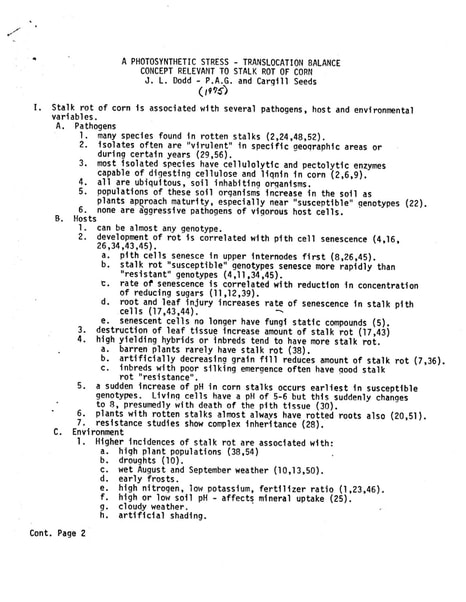
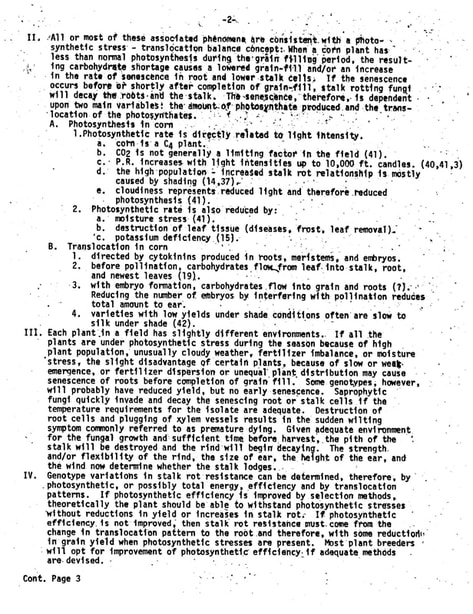
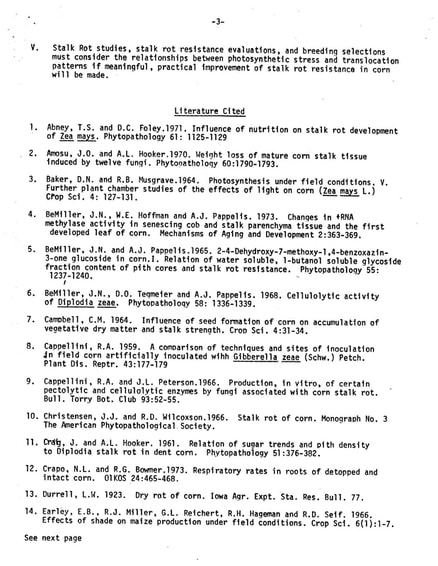
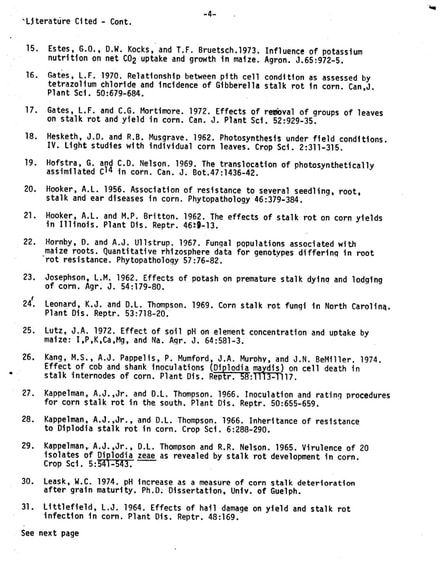
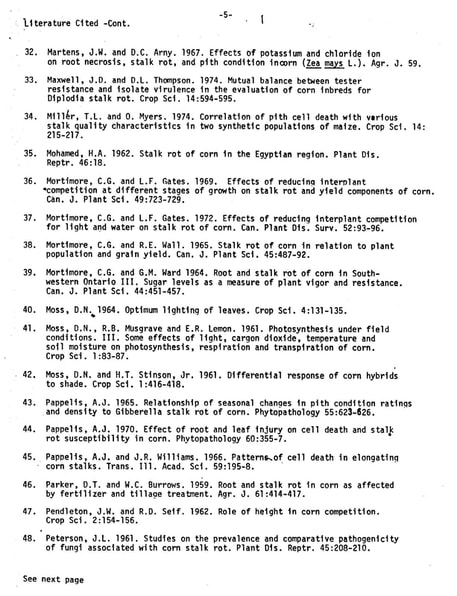
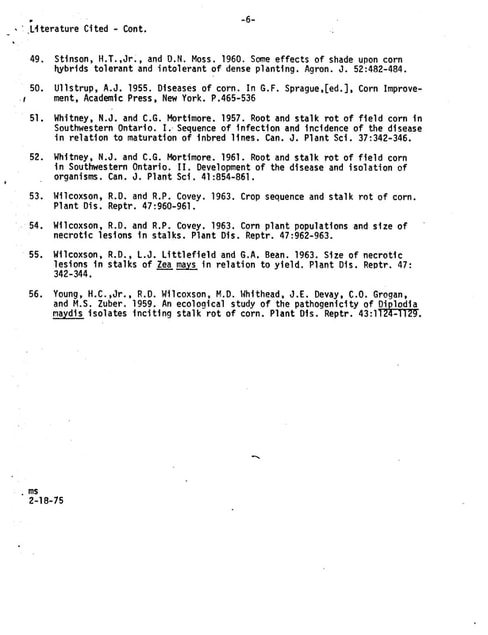
 RSS Feed
RSS Feed